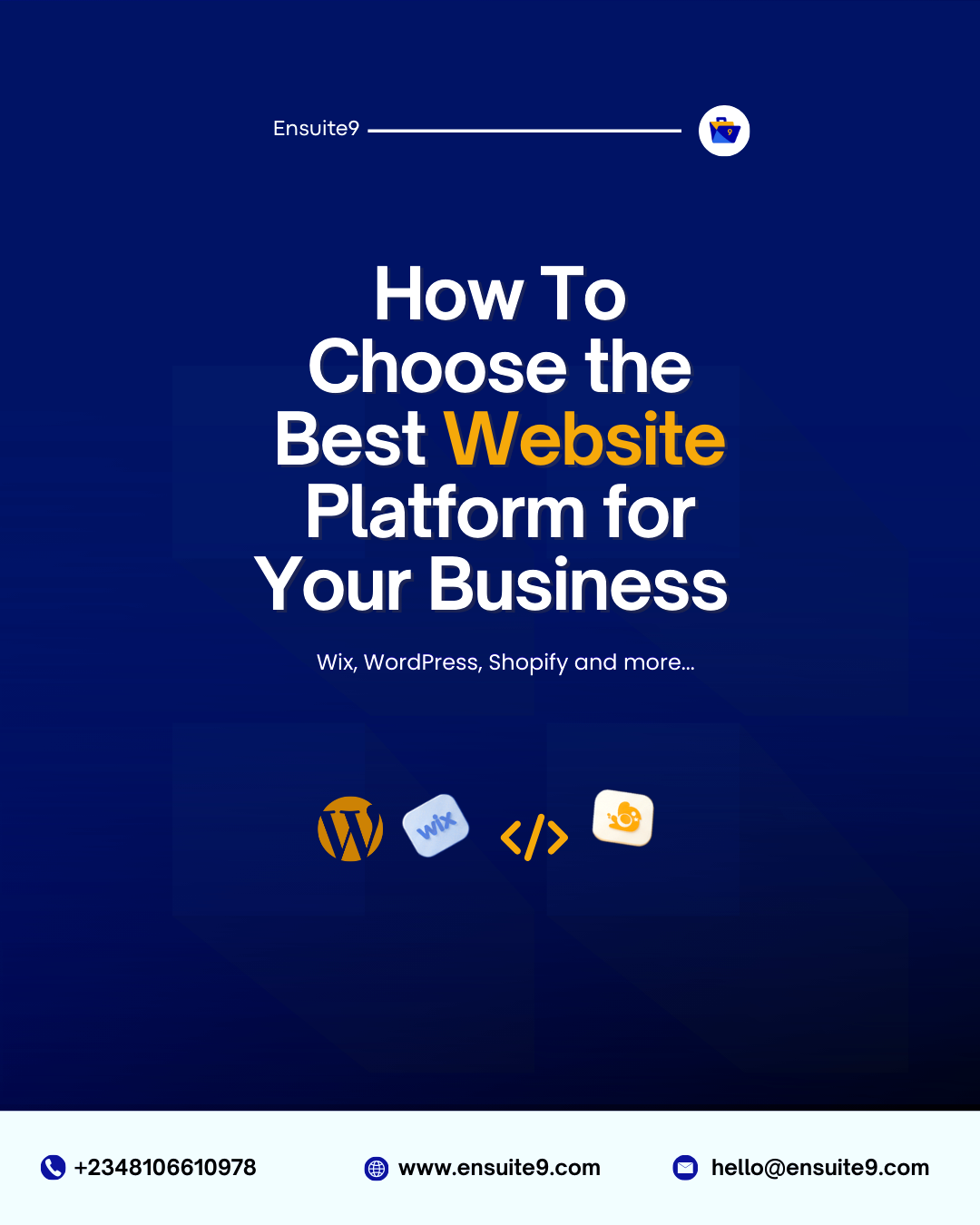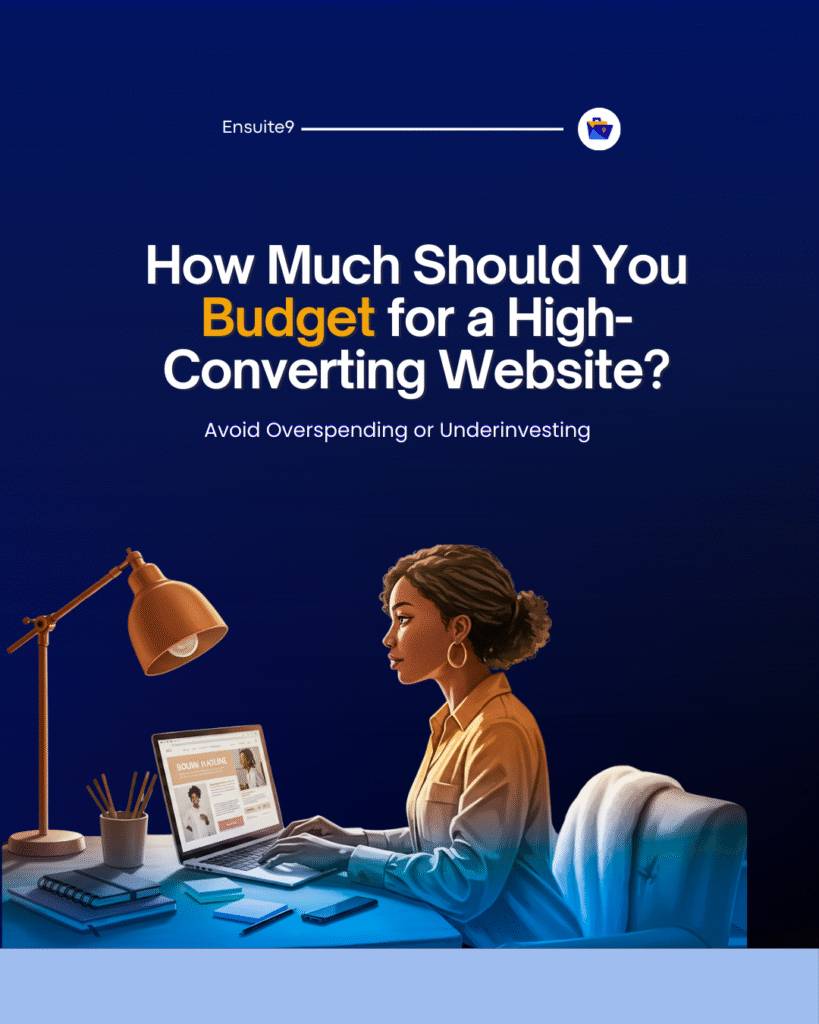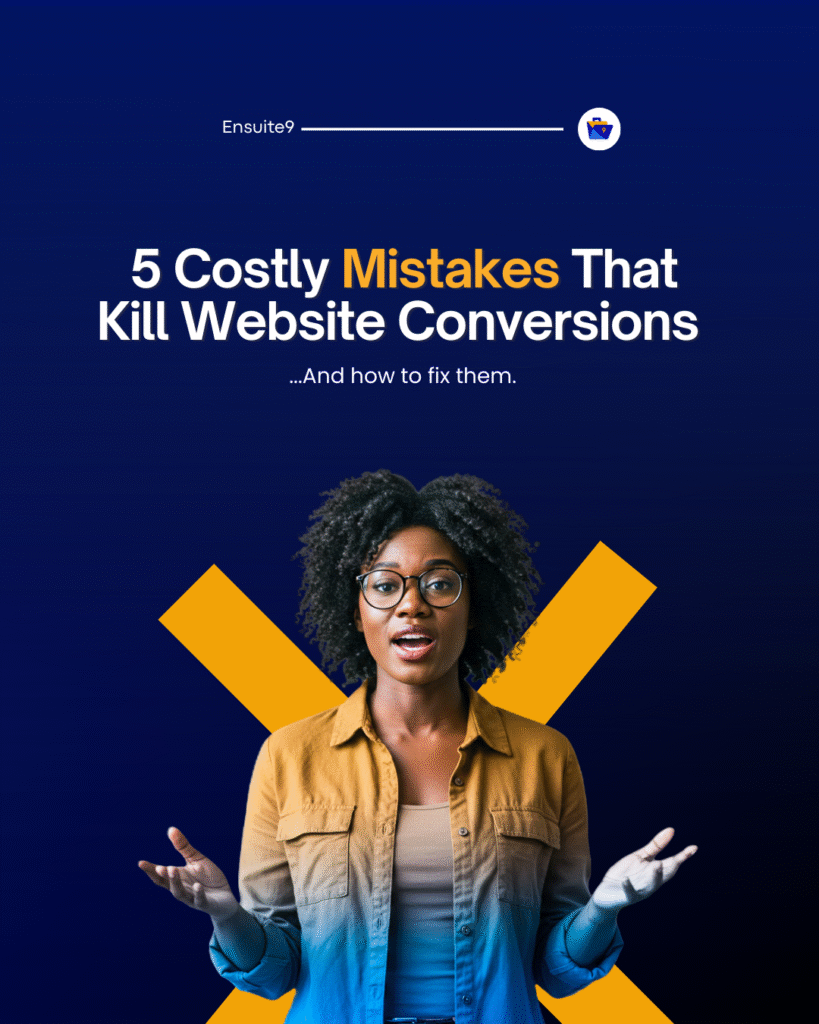Choosing the right website platform isn’t just a box to tick; it’s one of the biggest decisions you’ll make for your business online. The platform you go with shapes everything: how flexible your design can be, how easy it is to maintain, how well your site ranks on Google, and ultimately, how many customers convert.
If you’re a small business owner, startup founder, or creative building your first site, the questions start piling up quickly: Do you simply need a digital brochure to showcase your work, or are you looking to run a full e-commerce store? How much are you really willing to spend, and how hands-on are you when it comes to tech? And then there’s the big one—how important is SEO and site performance to your growth goals? That’s where the differences between platforms start to matter.
Builders like Wix and Squarespace are beginner-friendly with easy drag-and-drop features, while WordPress and Webflow give you more customisation power, though they take a bit more effort to set up. Then there is Shopify, designed almost entirely around e-commerce, and Joomla, which sits somewhere in between flexibility and complexity.
In this guide, we’ll break down the strengths and weaknesses of each option—WordPress, Wix, Shopify, Squarespace, Webflow, and Joomla—so you can pick the one that doesn’t just fit your budget but also matches your business model and future growth.
Let’s get right in!
What to Consider When Choosing a Platform
When you’re building a website, the platform you choose can either set you up for smooth sailing, or constant headaches. It’s not just about how the site looks; it affects how easy it is to update, how well you rank on search engines, and how much you’ll end up spending long-term. So before diving in, pause and ask yourself: Do I just need a simple brochure site, or am I planning to sell products online? What’s my budget, not just today, but as I grow? Am I comfortable tinkering with tech, or do I need something drag-and-drop simple? How much do SEO and performance matter to my goals?
These questions will guide you toward the platform that’s the best fit for you. Let’s walk through the main contenders.
1. WordPress – The All-Rounder (Ultimate Flexibility and SEO Power)
WordPress is like the Swiss Army knife of website platforms. It’s considered the incredibly best website platform for businesses in terms of flexibility; you can build anything from a blog to a full-scale e-commerce site. With thousands of plugins and themes, the possibilities are endless. The trade-off? It takes a bit more setup and maintenance than drag-and-drop builders. But if scalability and customisation are priorities, WordPress is hard to beat.
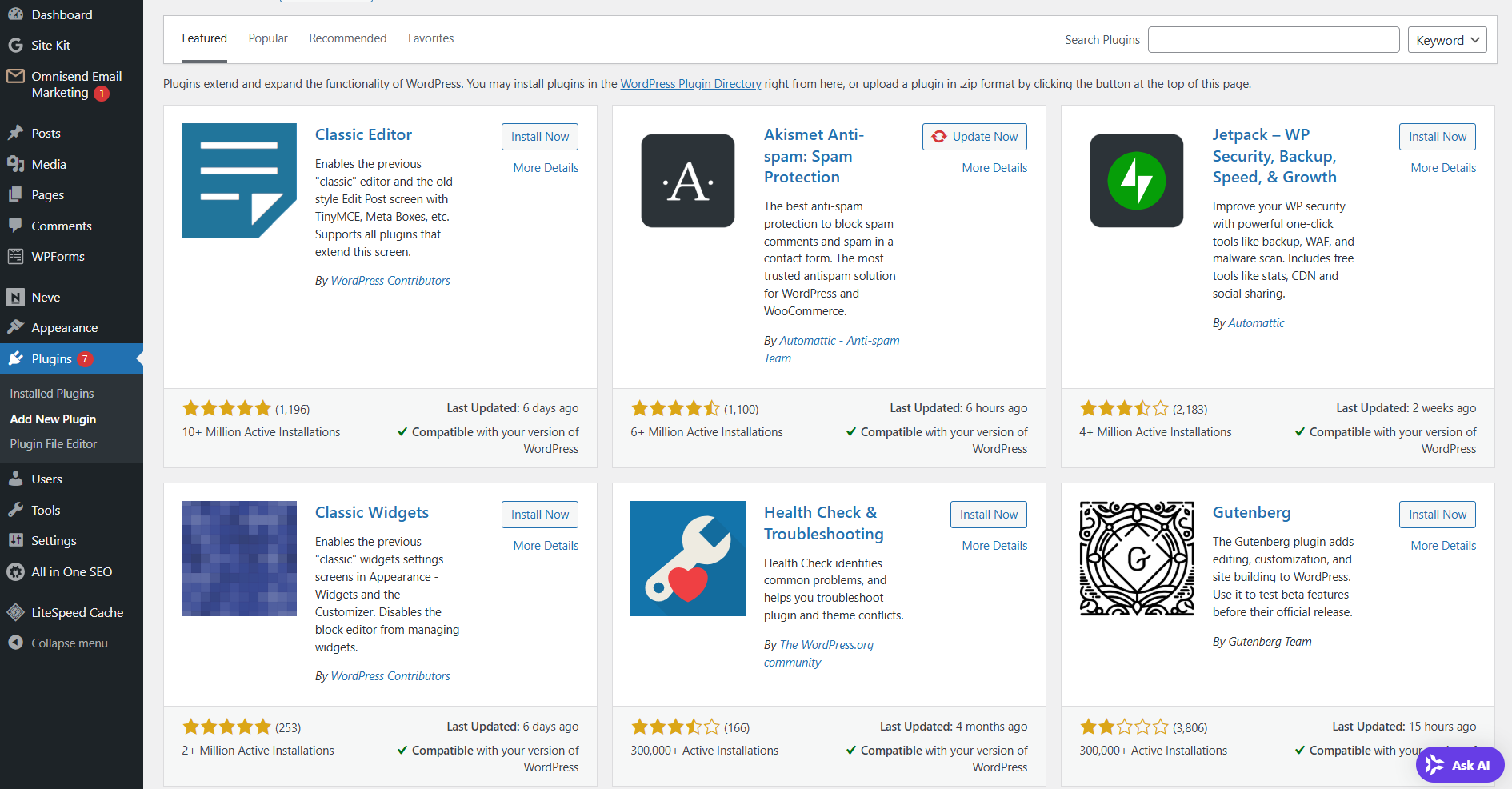
Overview: WordPress (self-hosted) runs about a third of all websites. It’s an open-source CMS powering blogs, portfolios, and large e-commerce stores (with WooCommerce) alike. You install it on your own hosting, giving you full control over design and code.
Strengths: Huge plugin ecosystem (60,000+ plugins), thousands of themes, and 3rd-party integrations. Unmatched SEO capabilities – experts often call WordPress the “best CMS for SEO”, thanks to editable permalinks, meta tags, image alt text, and top SEO plugins (Yoast, All in One SEO, etc.). A vast community means many tutorials and lower development costs. WordPress can handle blogs, membership sites, scalable stores (with WooCommerce), and more. Its scalability is excellent if you pick a strong hosting plan.
Weaknesses: Because it’s so open, beginners face a learning curve. You’re responsible for hosting setup, security updates, backups, and plugin maintenance. Costs can add up (premium themes/plugins or developer time) even though the core software is free. Multi-site or complex apps may need technical knowledge. If you’re not comfortable with any code or maintenance, WordPress can be challenging.
Ideal for: blogs, content-heavy sites, businesses needing customisation (e.g., membership portals, complex forms) or those planning to scale. Also strong for e-commerce via WooCommerce (though requires setup).
SEO: Best of the bunch. WordPress SEO plugins give real-time feedback on optimisation, clean code and caching improve speed, and you control all on-page SEO settings. For example, WordPress’s focus on user experience and clean structure tends to lower bounce rate (good for ranking).
Cost: Software is free, but plan for domain + hosting (shared can be $5–$15/mo for small sites; larger sites may need $20+). Premium themes cost ~$30–100, plus any paid plugins or a developer if needed.
(See: The Complete Guide to Hiring a Web Designer Who Converts)
(See Also: How Much Should You Budget for a High-Converting Website)
2. Wix – Easy Drag-and-Drop Builder
Wix feels like the friendly neighbourhood café where everything is simple, accessible, and made to put you at ease. It’s designed for beginners and non-technical users, making it easy to drag, drop, and publish a professional-looking website in hours rather than weeks. The platform gives you hundreds of templates, built-in design tools, and an intuitive editor that takes the intimidation out of web design.
The ease of use, however, comes with trade-offs. Wix websites can sometimes feel less scalable than those built on more advanced platforms, especially when your business grows and demands custom integrations. While Wix has improved its SEO features over the years, it still doesn’t match the flexibility and depth of platforms like WordPress when it comes to optimising every technical detail.
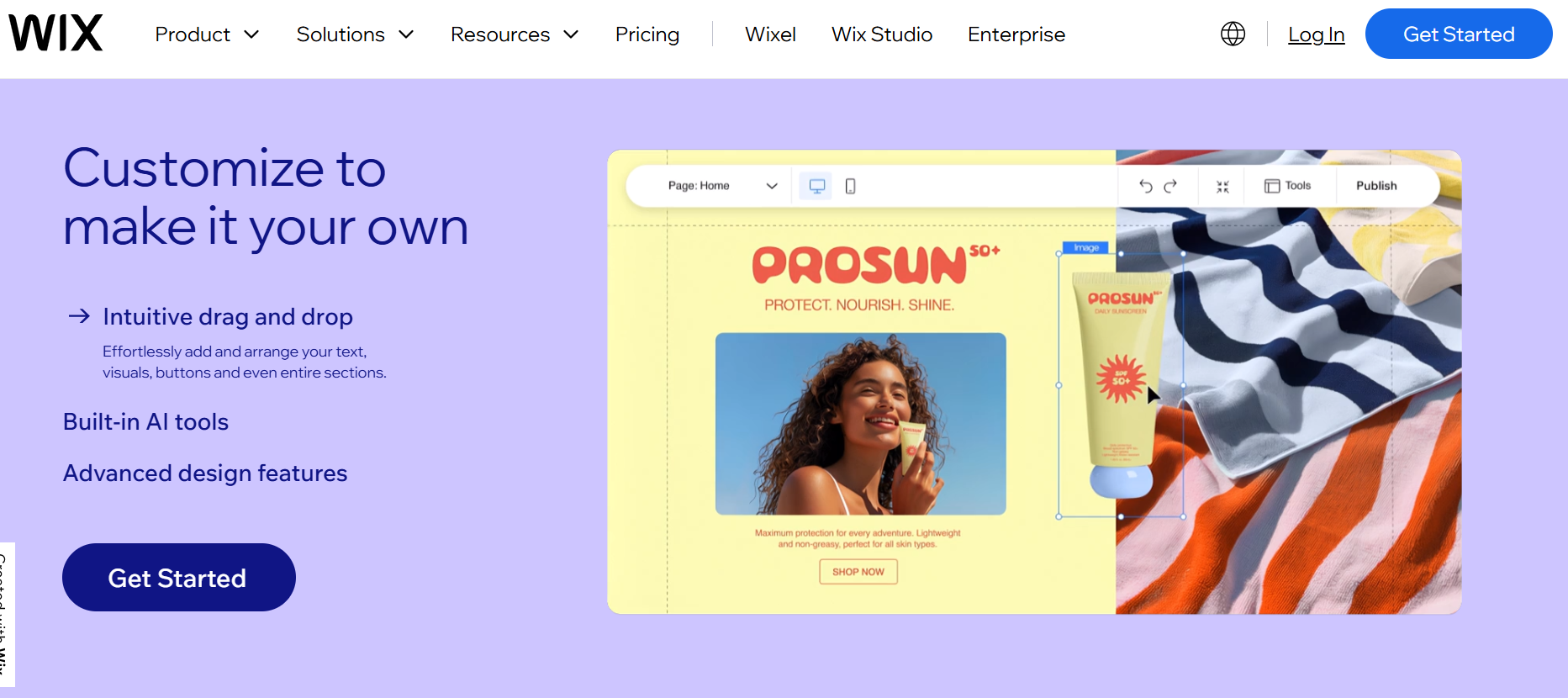
Overview: Wix is a hosted website builder with a visual drag-and-drop editor. It includes hosting and maintenance in one service. Users choose from templates and customise with no coding.
- Strengths: Extremely beginner-friendly. You can have a site live in a few hours with little expertise. Templates are modern, and the Wix ADI (Artificial Design Intelligence) can build a starting site for you. Wix has built-in tools for blogging, simple SEO edits, and a growing app market. The all-in-one approach means you don’t worry about hosting or security updates – Wix handles that. For Nigerian and global small businesses, Wix now integrates local payment providers: notably, Paystack (for Nigeria) is fully supported, enabling payments via cards (Visa, Verve), USSD, bank transfers, etc.
Weaknesses: Limited scalability. If your store grows very large or you need highly custom functionality, Wix can become restrictive. Its SEO has improved (with a built-in SEO setup checklist and schema features), but it still lags behind WordPress in advanced control. Also, if you’re locked into Wix’s platform, migrating your site away is difficult. Mobile responsiveness and page speed can be issues if not optimised.
Ideal for: Small businesses or portfolios that need a simple, good-looking site quickly. Great for creatives, freelancers, local service providers, or any site where visual design and ease of use outweigh deep customisation. Beginner blogs or shops with a few products can work well on Wix.
SEO: Wix offers basic SEO features out of the box (editable titles, meta descriptions, alt text, clean URLs, and an SEO guide). Recently, Wix has improved site speed and structured data options, though “limitations with custom URL structuring and slower page load speeds” can impact SEO. In practice, you can rank well on Wix with care, but WordPress still gives more advanced SEO tuning.
Cost: Free plan available (Wix ads and “wixsite.com” URL). Premium plans start around $10–$15/mo for basic sites, up to $23/mo for Business Basic (required for online payments). Each plan includes hosting and a free domain for 1 year.
3. Shopify– E-Commerce Powerhouse
Shopify is the go-to for online stores. It’s designed specifically for e-commerce, so everything from product listings and payments to shipping and analytics is built-in and streamlined. You can launch a professional store in days, not weeks.
On the flip side, Shopify isn’t great if you only need a blog or a simple business website—it’s an investment geared toward selling. If e-commerce is at the heart of your business, Shopify’s power and scalability are worth the cost.
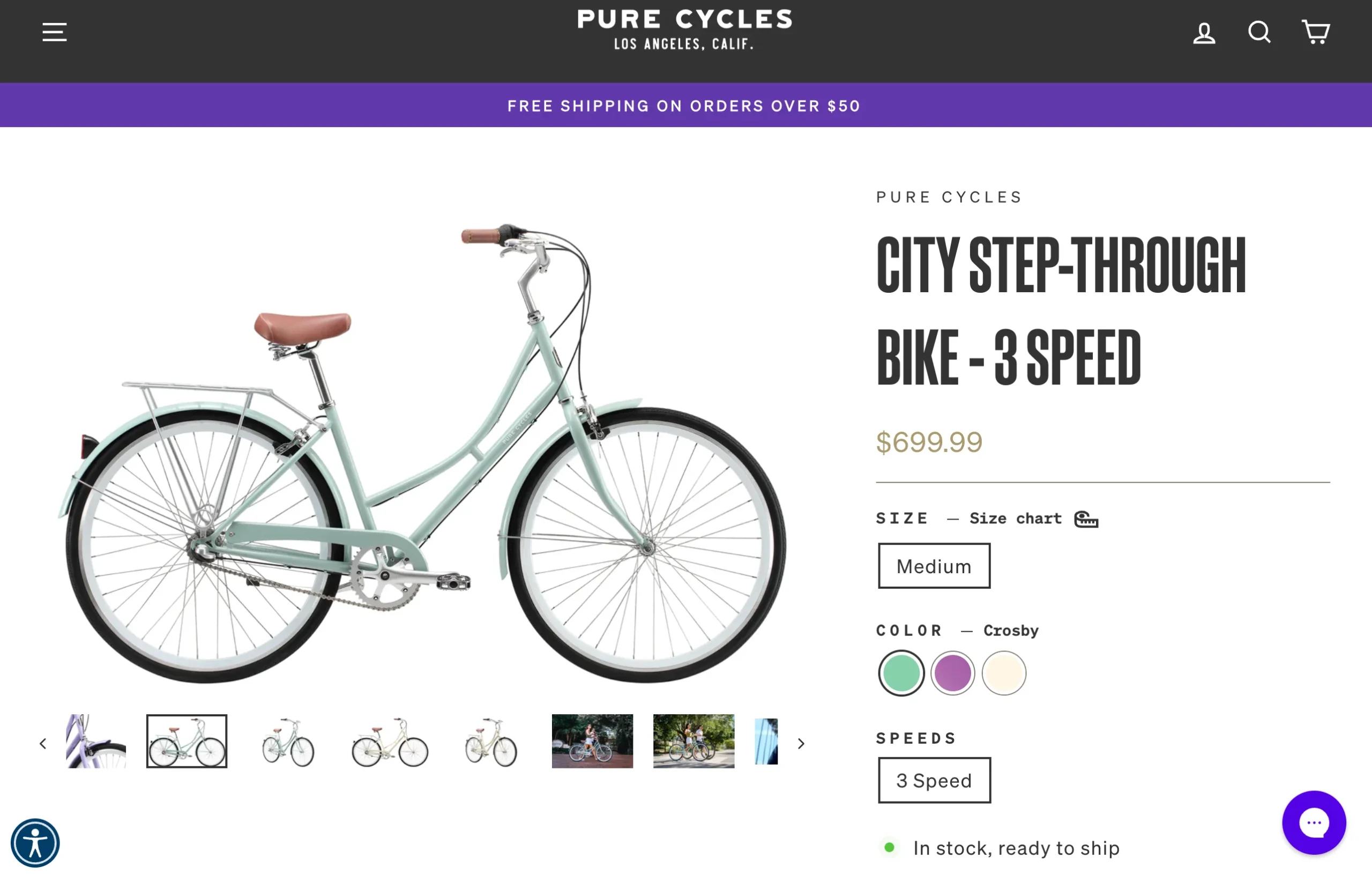
Overview: Shopify is a hosted e-commerce platform built specifically for online stores. It handles hosting, payment processing (if you use Shopify Payments), security, and most store features out of the box.
Strengths: Everything for selling online is included: unlimited products, inventory management, multiple payment gateways, abandoned-cart recovery, discount codes, and multi-channel selling (Facebook, TikTok, etc.). The app store (8,000+ apps) extends functionality (marketing, dropshipping, subscriptions). Shopify scales seamlessly for small boutiques up to enterprise-level shops, with global hosting and infrastructure. 24/7 support and a massive user community are big pluses. For Nigerian merchants, Shopify supports local payment via the official Paystack app (introduced in 2016), enabling Naira transactions.
Weaknesses: Monthly costs are relatively high. Plans start at $29, $79, and $299 with additional transaction fees if not using Shopify Payments (fees up to 2% without Shopify Payments). The design flexibility is more limited than WordPress or Webflow: you choose from themes and adjust settings, but deep layout tweaks require editing code (Liquid). You are tied into Shopify’s checkout and backend – customisation beyond what Shopify allows can be tricky. Blogging is functional but not as robust as WordPress.
Ideal for: Any business whose primary goal is selling products or services online. Shopify is the go-to for e-commerce, especially if you expect to grow. It’s great for fashion, consumer goods, digital products, or even service bookings (with apps). Even beginners can launch a simple store, but to fully leverage Shopify’s power, moderate technical skill helps.
SEO: Shopify includes solid built-in SEO basics: editable titles, meta descriptions, alt text, SSL, and fast global hosting. It’s been rated among the best website builders for SEO. You can also use Shopify’s AI tools to generate optimised product descriptions. Unlike Wix, Shopify is designed for speed and SEO. (See image below: a sample Shopify storefront built in Wix’s editor.)
Cost: No free plan (3-day free trial available). Plans start at $29/mo (Basic), $79 (Shopify), $299 (Advanced). You’ll likely pay extra for premium themes (often $100–$300) and any paid apps. If you use Shopify Payments (available in limited countries), you avoid third-party transaction fees; otherwise, expect a 2% fee per sale.
4. Squarespace – Design-Driven All-in-One
Squarespace is all about design. It’s known for its sleek, modern templates that look good right out of the box, which makes it a favourite for creatives like photographers, designers, and boutique brands. The all-in-one platform also handles hosting and security.
But with style comes limits—customisation is more rigid than WordPress or Webflow, and advanced SEO tools aren’t as strong. Still, if aesthetics and ease-of-use matter more than deep flexibility, Squarespace delivers a polished online presence with minimal fuss.
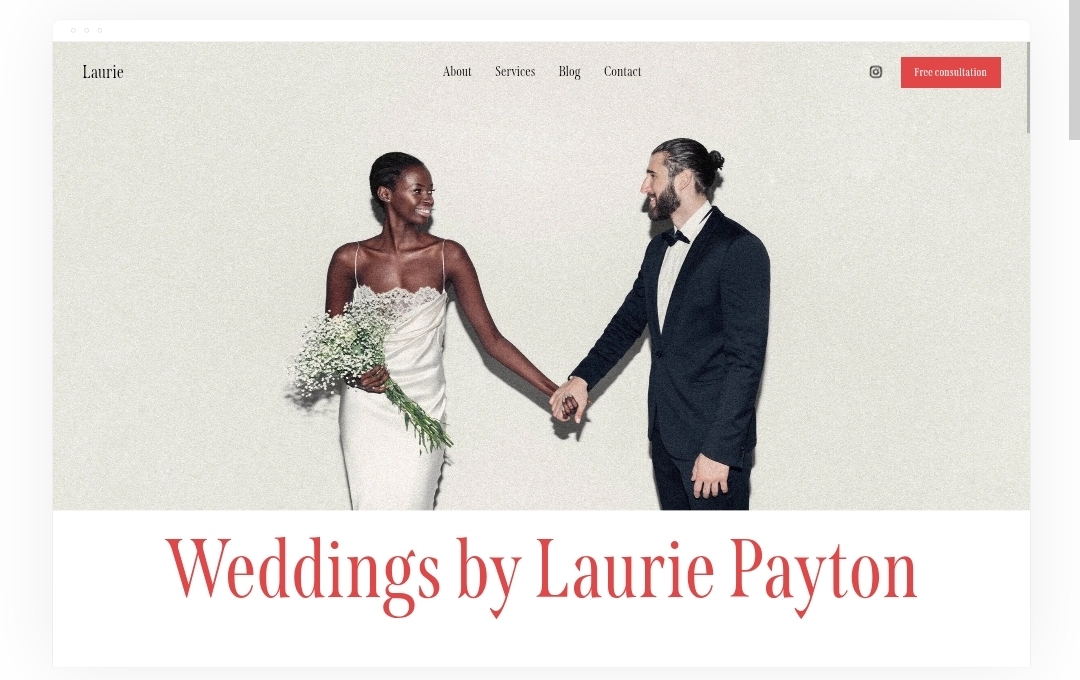
Overview: Squarespace is a hosted builder like Wix, known for its polished, design-focused templates. It’s often chosen by creatives, photographers, and small shops.
Strengths: Beautiful, mobile-responsive templates and an intuitive editor. Great blogging and built-in portfolio/gallery features. It handles hosting and security, plus basic marketing tools (email campaigns, SEO settings). Squarespace recently added more e-commerce capabilities (inventory, discounts, shipping rates). Customer support is strong (chat/email) and it offers unlimited storage/bandwidth.
Weaknesses: Less flexibility than WordPress. You have fewer templates and less ability to tweak underlying code (no headless mode or full CSS access on all plans). E-commerce is decent but still less advanced than Shopify or WooCommerce (for example, no built-in abandoned cart recovery on lower plans). SEO controls exist but are more limited (no free choice of category slugs, fewer plugins). Additionally, built-in blogging is good but not as extendable as WordPress.
Ideal for: Small businesses or artists who want a stylish, turnkey site without fuss. Squarespace works well for photographers, designers, cafés, boutiques, and individuals who value visual aesthetics. It’s also good for services or events, thanks to built-in scheduling and RSVP tools.
SEO: Squarespace sites can rank well; it provides editable title tags, meta descriptions, alt text, XML sitemaps, and 301 redirects. Some SEO experts still argue WordPress has the edge for advanced campaigns, but Squarespace’s new generation of templates and improved site speed have closed the gap. A recent guide notes that old myths about “Squarespace sucks for SEO” are outdated, and in fact it’s a decent all-rounder for search when used properly.
Cost: Plans range from about $16–$23/mo for a basic site, $27–$49/mo for e-commerce features. No free plan (14-day free trial). The Business plan adds commerce fees of 3% (on top of Stripe/PayPal fees), whereas the Commerce plans remove those and offer more shop features. Domains and SSL are included.
5. Webflow – Design Freedom with Code-Like Control
Webflow is where design freedom meets professional-grade control. It’s like a designer’s dream, offering pixel-perfect customisation without needing a developer for every tweak. The platform even blends in CMS capabilities, making it powerful for both content-heavy sites and creative portfolios.
The learning curve, though, is steeper than Wix or Squarespace, and costs can add up. But if you’re aiming for a site that stands out, with advanced animations, layouts, and scalability, Webflow is a serious contender.
Overview: Webflow is a cloud platform that uses visual, HTML/CSS-style design tools. It generates clean code behind the scenes, so it’s like a hybrid between no-code builders and custom development.
Strengths: Unmatched design flexibility (practically any layout or animation can be built visually). Responsive design is inherent – you control styling across breakpoints. Webflow’s CMS lets you create dynamic content (blogs, listings) without plugins. SEO is strong because you can edit all meta tags, generate sitemaps, and the code is lightweight. You also get great performance. For designers or agencies, Webflow speeds up custom site builds without writing code.
Weaknesses: Steep learning curve: if you’ve never done front-end design, Webflow can be daunting. It’s more complex than Wix/Squarespace. The free/cheapest plans are very limited (just 2 pages), and realistic sites require paid plans ($16–$35+/mo for simple sites, $29–$212+/mo for e-commerce). It’s not cheap for small budgets. E-commerce on Webflow exists but isn’t as mature as Shopify; features like multi-currency, digital downloads and subscriptions are improving but still basic. Also, Webflow hosting is required (you cannot self-host), so you’re tied to their platform.
Ideal for: Startups or businesses that want a fully custom professional website without a developer coding from scratch. Designers who want full pixel control. Content sites that benefit from a custom CMS (like small magazines, portfolios, or unique blogs). Also agencies that build sites for clients and need top performance/SEO. For global brands needing custom features but wanting a speedier build than hand-coding, Webflow fits.
SEO: Very good. You can set up SEO meta tags on every page and element, use custom URL slugs, and add 301 redirects easily. Webflow automatically adds responsive images and clean code, which boosts speed. Many users report excellent SEO results. (For instance, our own team ensures all Webflow builds have on-page SEO fundamentals—fast load times, clear headers, alt tags, etc.)
Cost: No free plan beyond testing. Site plans start around $16–$35/mo (billed annually) for basic sites, higher if you add their CMS. E-commerce plans run from $29 to $212+ per month. Custom plans for agencies are pricier. You’ll also need to pay per project if you have multiple clients. For a single small business site, Webflow can be overkill on cost.
6. Joomla – Powerful Open-Source CMS
Joomla sits somewhere between WordPress and more technical CMS platforms. It offers strong flexibility, multilingual support, and powerful content management out of the box. For developers and businesses needing layered functionality without building from scratch, it’s a solid choice.
The downside? It’s not beginner-friendly. Joomla requires more technical skill and doesn’t have as large a plugin or theme ecosystem as WordPress. Still, for organisations, non-profits, or businesses that need complex websites with structured content, Joomla delivers.
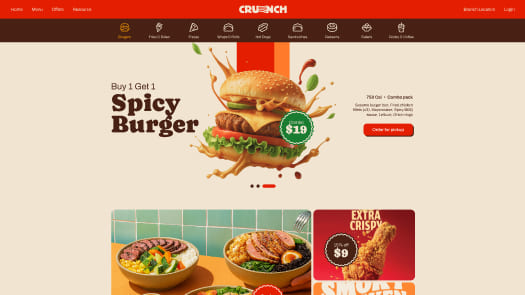
Overview: Joomla is an older open-source CMS (like WordPress) that powers millions of sites worldwide. It’s PHP/MySQL-based and free to install on your own hosting.
Strengths: It’s built for complex, content-heavy sites. Multilingual support is native (no extra plugins needed), and it has robust user permission controls. Joomla can handle large directories, membership sites, social networks (via extensions), and large news portals. It’s generally faster “out of the box” than vanilla WordPress and can scale well if optimised.
Weaknesses: Steeper learning curve and fewer extensions than WordPress. The admin interface is less intuitive for beginners. You’ll need some technical skill to set up and manage (e.g., menu structures, categories, and template overrides). The marketplace of templates and plugins is smaller, so you might need more custom coding. Community support is strong but not as vast as WordPress. Security patches and maintenance are your responsibility.
Ideal for: Medium-to-large businesses or organisations that need complex functionality and multilingual content from the start. Also, if you have a developer team familiar with Joomla, it can be a robust choice. However, many small businesses now choose WordPress instead due to its ease.
SEO: Joomla can be SEO-friendly with extensions (like sh404SEF) and built-in features. You can edit metadata and URLs, but overall you may find fewer SEO tutorials/resources than for WordPress. In practice, WordPress typically wins on SEO ease, but Joomla is certainly capable if configured well.
Cost: Joomla itself is free. You pay for hosting and domain as usual. Development costs can be higher, since WordPress’s bigger market means more cheaper themes/plugins and developers. As a rule of thumb, expect similar hosting costs as WordPress, but potentially higher developer fees if you need custom work.
Platform Comparison & Recommendations
Small Business/Beginner: If you have limited technical skill and a small budget, Wix or Squarespace are great choices. They let you launch quickly with minimal fuss. Wix offers more templates and a free tier, whereas Squarespace has premium designs and a polished builder. They handle hosting, updates, and basic SEO (though for complex SEO you’re more limited).
Content/Blog Focused: WordPress shines for blogging and content management. It’s also scalable into e-commerce (WooCommerce). Its “best for SEO” reputation makes it ideal if you care about search rankings. Budget for some hosting and possibly a freelancer to set it up.
E-commerce Focused: Shopify is the top pick for serious stores, thanks to built-in sales tools and scalability. Wix can sell products too (see image example of a Wix-built store above), but it’s best for smaller shops. If you want full control of design and don’t mind adding plugins, WordPress+WooCommerce is an alternative (with no monthly software fee, but more hands-on setup).
Design-Driven/Unique Needs: Webflow is unbeatable if you or your designer need pixel-perfect control and strong SEO. For most business owners, though, it’s more effort and cost than necessary.
Multilingual/Complex: If you require heavy custom access control or multilingual capability right out of the box, Joomla might be useful, but note the steeper learning curve.
Example: Shopify vs. Wix for E-Commerce
If you’re choosing between Shopify vs Wix for ecommerce, the decision often comes down to growth plans. Shopify’s platform is built for scaling stores, with extensive inventory and marketing features. Wix’s e-commerce is improving (it even integrates Paystack for Nigerian payments), but it’s still geared to smaller catalogs.
Ease of Use: Wix is slightly more intuitive for beginners (drag-and-drop). Shopify requires a bit more learning, but its admin is streamlined for store operations.
E-commerce Features: Shopify has advanced built-in tools (multi-channel selling, dropshipping apps, advanced analytics); Wix provides essentials (product pages, carts, payments).
Pricing: Wix has a free plan (with Wix ads) and paid plans starting around $14.50/mo. Shopify starts at $29/mo (no free plan) and adds credit card fees if not using Shopify Payments.
Scalability: Shopify wins for large or fast-growing stores. Wix is best for small-to-medium shops.
In summary, choose Shopify if e-commerce is your core and you expect rapid growth. Choose Wix (or WordPress+WooCommerce) if you want a simpler, cheaper start or if the site’s primary purpose isn’t selling products.
Figure: A corporate website example. Builders like Wix/Squarespace make it easy to create polished brochure sites (as shown above) without coding, whereas open platforms (WordPress, Joomla) offer deeper customization. Note that strong SEO foundations should be baked in from Day One to drive visibility.
Ultimately, the “best website builder for small business” depends on your specific needs.
